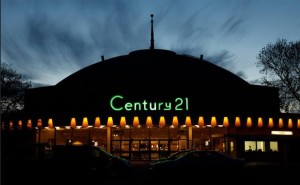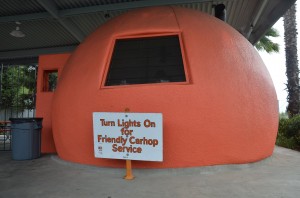In 1889 Thomas Edison travelled to Paris, France to enjoy the World’s Fair and to marvel at the recently completed Eiffel Tower. The colossal 81 story structure captivated Edison causing the famed American inventor to sign the tower’s guestbook, “To M Eiffel the Engineer the brave builder of so gigantic and original specimen of modern Engineering from one who has the greatest respect and admiration for all Engineers including the Great Engineer the Bon Dieu, Thomas Edison.” Eight years prior to Edison’s praise a French delegation that may have included that same M Gustave Eiffel visited another less iconic iron tower taking meticulous notes and surveying every detail. Armed with information and a rough design the French engineers returned to Paris receiving approval for Le Tour Eiffel shortly thereafter. Over a century later a former complaint would be filed accusing M Eiffel of stealing the idea and the design. If proven true the complaint would combat Edison’s assertion of the Eiffel Tower as an original specimen and instead would show that the inventor needn’t travel farther than his own country to marvel at engineering; not of the Eiffel Tower, but of San Jose’s Electrical Light Tower.
In 1881 J.J. Owen, publisher of the San Jose Mercury News, lobbied for the idea of a massive electrical light tower to be constructed in downtown San Jose. Owen argued that a light tower would eliminate the need for costly gas street lamps and, with the blessing of the city months after, constructed the $4,000 tower at the intersection of Santa Clara and Market Streets. The 237 foot tower (nearly the size of the modern day 18 story Adobe Systems high rises) used six massive lamps and a reflecting shield to illuminate the sky and provided San Jose with the distinction of being the first city west of the Rockies to be illuminated by an electric light.
The giant light tower generated excitement and intrigue in San Jose’s quiet downtown and was soon dubbed the, “Beacon of the West.” Unfortunately, the tower proved to be more of a beacon for trouble than creativity and progress; attracted by the bright lights ducks would regularly fly into the tower and crash to the streets below, local farmers complained of unusual animal activity from their livestock, and most troublesome the light tower proved ineffective at actually lighting downtown due to the sheer distance from the lamps to the ground. Within 3 years the tower would only be lit for special occasions and was widely mocked by local residents. Finally, after years of rusting the giant tower would meet its’ demise in December of 1915 collapsing down onto the street in the midst of a severe wind storm.
For the next 74 years the tower would be largely forgotten until the centurion celebration of its French doppelganger in 1989. That same year the city of San Jose would file a copyright infringement complaint against the city of Paris and against Eiffel’s estate demanding that San Jose receive compensation from the revenue generated by the Eiffel Tower. After a fierce trial the complaint would eventually be dismissed but doubt had forever been cast on the originality of Eiffel’s design.
A trip to History Park provides you with a modern half sized replica of the tower as well as a look into life in the old days of the Valley of the Heart’s Delight. While there, be sure to check out the unique print shop as well as the classic candy and ice cream parlor inside of the Pacific Hotel.

San Jose's Eiffel Tower - What Could Have Been
 an alleged mistress in a top floor penthouse as the tale goes) in a large warehouse facility on East Taylor and 9th just outside of Japantown in San Jose. Fortunately for Dan and Dean, Reggie had found a new space for his vehicles in Monterey and was vacating the San Jose warehouse. Gordon and Biersch snapped up the space (presumably without said mistress) and the South Bay’s largest brewery remains there to this day.
an alleged mistress in a top floor penthouse as the tale goes) in a large warehouse facility on East Taylor and 9th just outside of Japantown in San Jose. Fortunately for Dan and Dean, Reggie had found a new space for his vehicles in Monterey and was vacating the San Jose warehouse. Gordon and Biersch snapped up the space (presumably without said mistress) and the South Bay’s largest brewery remains there to this day.





